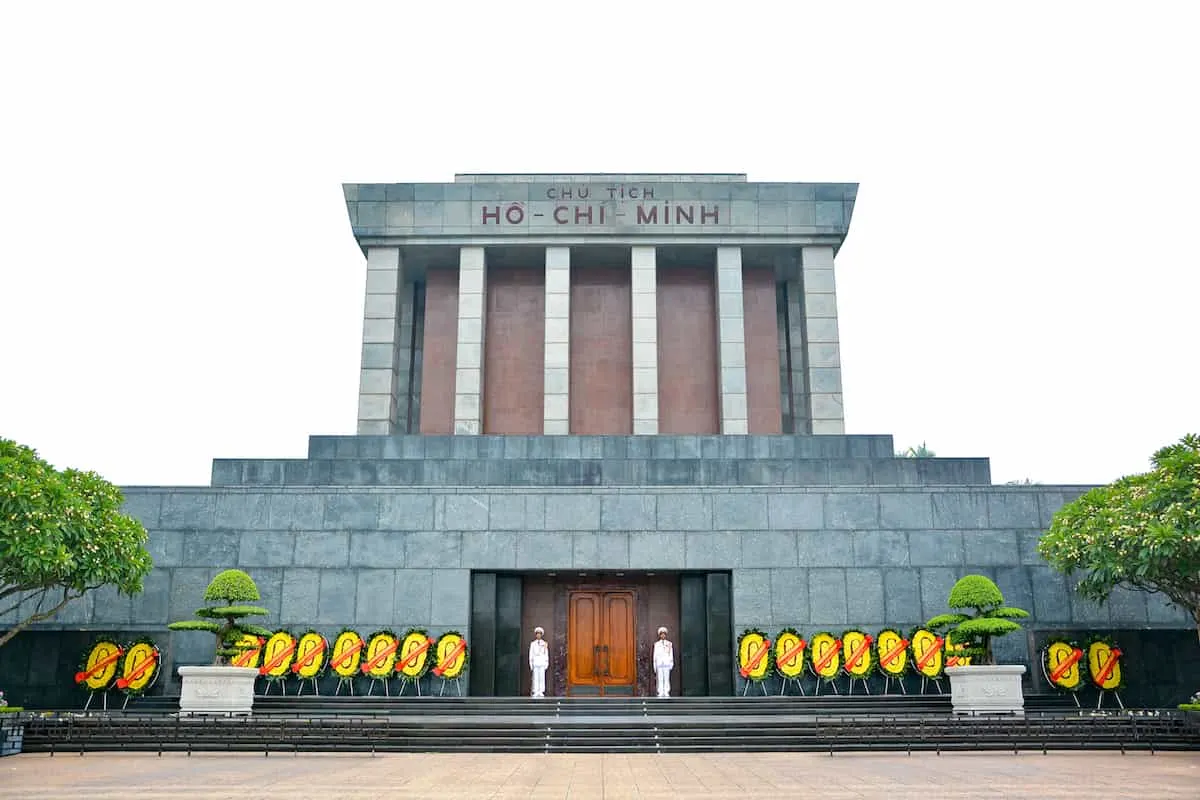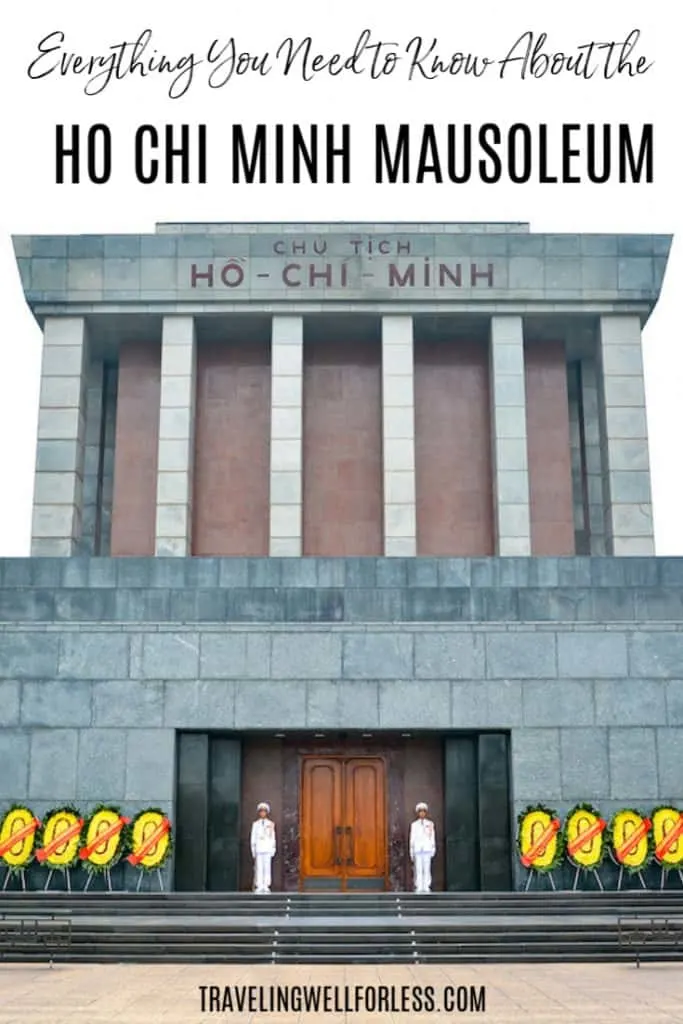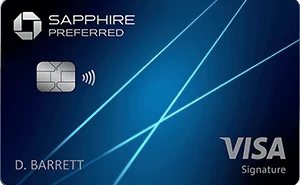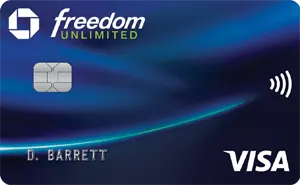Planning a visit to Hanoi and want to see the local attractions? Here’s everything you need to know about Ho Chi Minh Mausoleum.
As one of the most visited attractions in Hanoi, a visit to Ho Chi Minh Mausoleum is a must.
But before you go there are a few things you should know to make your visit more enjoyable.
Keep reading for insider tips and the best time to visit the Ho Chi Minh Mausoleum.
Vietnam requires a visa to enter the country. You can avoid a trip to the embassy or sending away your passport by getting a Vietnam visa online.
Everything You Need to Know About the Ho Chi Minh Mausoleum

Despite Ho Chin Minh’s desire for his cremated body’s ashes distributed throughout Vietnam, the Vietnamese government had its own plans.
They sent his body to a lab in Moscow for embalming like Vladimir Lenin. Then erected a massive mausoleum 70 feet high and 135 feet wide to house his body. The Ho Chi Mini Mausoleum opened on August 29, 1975.
Unlike the rest of the mausoleum complex, the Ho Chi Minh Mausoleum is free to visit.
Here are crucial tips you need to know for a successful trip while visiting Hanoi.
Pro-tip: Children under three years old are not allowed to enter the mausoleum.
Getting There
The Ho Chi Minh Mausoleum is in the Ba Dinh district of Hanoi.
We walked from the Sofitel Legend Metropole to the Ho Chi Minh Mausoleum. It was a 35-minute walk from the French Quarter with several interesting buildings along the way.
But Google routes you to the Ho Chi Minh Mausoleum’s physical location. The building is a quarter of a mile from the entrance to the complex.
The fastest and most efficient way to get to the Ho Chi Minh Mausoleum is to take a cab.
Pro-tip: Get directions to the Tourist Information Center Mausoleum, Lê Hồng Phong, Đội Cấn, Ba Đình, Hà Nội
This will take you to the entrance to the mausoleum complex.
When to Visit
Restricted visiting hours exist so pay special attention when planning your visit.
The Ho Chi Minh Mausoleum is open from 8 am to 10:30 am Tuesday to Thursday from April to September and from 8 am to 11 am on weekends.
From December to March mausoleum hours are 8 am to 11 am Tuesday to Thursday and 8 am to 11:30 am on weekends.
The Ho Chi Minh Mausoleum is closed every Monday and Friday. During the months of October to November Vietnam sends Ho Chi Minh’s embalmed body to Russia for maintenance.
Pro-tip: Avoid visiting on Ho Chi Minh’s birthday (May 19), Vietnam’s National Day (September 2), and the first day of the Lunar New Year. Lines are longer than normal.
Dress Code
The Ho Chi Minh Mausoleum is a sacred site and the dress code is strictly enforced.
These types of clothing are not permitted:
- Short shorts
- Mini-skirts
- Sleeveless shirts and tops
- Tank Tops
- Spaghetti string tops
Pro-tip: You can cover your shoulders with a pashmina or scarf.
My skort that comes above my knees was acceptable.
Security and Baggage Storage
All visitors have to go through a security screening like at the airport. You put your bags and purses through the baggage scanner.
Don’t bring water or any liquids because you’ll have to throw them out.
If you have cameras and other recording equipment you’re handed a large red hard canvas tote to carry prohibited items. This includes iPads.
You can keep your cell phones but be respectful and don’t take any photos or videos while in line.
Large bags such as backpacks are not permitted in the Ho Chi Minh Mausoleum. Medium sized bags like my cross-body bag were fine.
If your bag is too large you’re given a blue hard canvas tote to carry your backpack or bag.
Pro-tip: You’ll drop off your red and blue bags at a building on the left about 50 yards before the entrance to the mausoleum.
You’re assigned a numbered claim ticket plastic tag that looks like a key chain. Don’t lose your tag!
Join the line.
Lines
Thousands of people visit the Ho Chi Minh Mausoleum every year. Some Vietnamese save for years to pay tribute to their departed revered leader.
Yet all the people in line near me were from another country. There was a family from India, a couple from Europe, and a group from Australia. Further ahead in the line were several well-behaved preschool school groups.
Lines snake around the complex in Disneyesque fashion. But unlike lines at the Magic Kingdom, these lines move quickly.
The lines reminded me of the thousands that waited to pay respect to John McCain.
The collapsible people herding contraptions (I have no idea what they’re called) kept everyone in neatly formed rows of two lines. The crowd control equipment ensured that no one strayed or ventured where they didn’t belong.
Spacing was wide enough so that you didn’t have to rub shoulders with your sweaty neighbor.
And in the event of rain, the overhead plexi cover shields you from the elements.
If you can’t stand for long periods of time, you may want to skip this attraction. Wheelchair users have to use a manual wheelchair provided by the mausoleum.
Pro-tip: Get on the left side. As you enter the Ho Chi Minh Mausoleum, the left side has front row viewing of Ho Chi Minh’s embalmed body.
Skip the Line
Because we walked from the French Quarter we passed the area where tour group buses parked. There was a sign indicating a separate line for appointments.
You may be able to skip the line (part of it and security) if book an appointment. At the time of this posting, I haven’t been able to figure out how to skip the line. I’ll update this post once I uncover the secret.
Entering the Mausoleum
As you approach the mausoleum the number of security guards increases. Instead of a few stationed at various points throughout the line, there are at least 30 guards.
In other words, it is heavily guarded and they ensure that you follow the rules and have proper decorum. After all, you’re entering a tomb.
There are guards at the first steps to the Ho Chi Minh Mausoleum. There are guards at the top of the steps before you enter the mausoleum.
Inside the mausoleum, there are guards every 10 feet. And there are four guards at the corners of Ho Chi Minh’s casket.
The interior is dimly lit as it’s a solemn procession as one would expect. You can’t stand, linger, talk, or point. You have to keep moving.
Ho Chi Minh’s body is so well preserved you’d never know he died 50 years ago.
Collecting Your Bags
You can pick up your red bag items after you exit the Ho Chi Minh Mausoleum from the building on your right side. Present your tag to retrieve your items.
The rest of the mausoleum complex allows photos and recording. So you’re free to take pictures and take videos.
But this part of the complex isn’t free. It costs 40,000 Vietnamese dong per person for entry. Stay tuned for a post about the Ho Chi Minh Complex which includes the Presidential Palace, Uncle Ho’s House on Stilts, One Pillar Pagoda, and more.
Because blue bagged items aren’t permitted anywhere in the mausoleum complex, you can only pick these up as you leave.
Conclusion
The Ho Chi Minh Mausoleum is one of the most visited attractions in Hanoi and well worth a visit. Be sure to add it to your list of the best places in Vietnam. Before you plan your trip here’s everything you need to know about the Ho Chi Minh Mausoleum.
It’s free to enter but prepare yourself for long lines. The lines move fast but if you aren’t able to stand for long periods of time you shouldn’t visit.
The fastest way to get to the mausoleum is by taxi. Have your cab drop you off at the Tourist Information Center Mausoleum address.
Be sure to dress appropriately, leave large bags in your hotel, and expect to store your camera.
When entering the line, enter on the left side. It’s the closest to Ho Chi Minh’s body when you enter the mausoleum.
You get about 1 minute or less inside to view the body so you have to decide if a 35-minute or longer wait in line is worth it.
Have you visited the Ho Chi Minh Mausoleum? Any tips you’d like to share?
Comment, tweet, or share this post.
Get the best credit card signup bonuses.
Follow us on Twitter | Facebook | Pinterest | Instagram | YouTube
Got a question? Or want help, suggestions, travel tips, learn how to travel for free, find out about travel deals, and maximize your miles and points? Use the subscription box below to sign-up and get post updates by email.
Traveling Well For Less has partnered with Your Best Credit Cards for our coverage of credit card products. Traveling Well For Less and YBCC may receive a commission from card issuers.




Thaihoa Huynh
Saturday 22nd of June 2019
I heard that certain days are for foreigners. I might be reading it wrong. So can I take my uncle that lives in Vietnam with me? Are visitors singled out? Do we need to bring ID/passport?
Debra Schroeder
Saturday 12th of October 2019
Hi Thailhoa,
I don't think they have certain days for foreigners. None of the signs indicated that. You can take your uncle that lives in Vietnam with you. Visitors aren't singled out. You do not need an ID or passport to visit the Ho Chi Minh Mausoleum.
Claire
Tuesday 23rd of April 2019
It's so strange to me that viewing a body is one of the most popular 'attractions' in Hanoi! Especially given that he wanted to be cremated. I'm not sure I would go and see him but I understand that thousands of local people would want to pay their respects.
Debra Schroeder
Sunday 28th of April 2019
Hi Claire,
Maybe some people don't realize they're going to see a body? Maybe they think it's like the Lincoln Memorial or something.
Nicole
Tuesday 23rd of April 2019
Visiting the Masoleum was interesting for me - I got yelled at by the guards. Not a fun experience but this post has everything you need to make sure that doesn't happen to you. Great tips!
Debra Schroeder
Sunday 28th of April 2019
Hi Nicole,
Yikes, that would have been scary. Glad you enjoyed the post.
Anda
Monday 22nd of April 2019
I've never been in Hanoi but Vietnam is very high up on my list. If I'd go visit the Ho Chi Minh Mausoleum it would be only out of curiosity. Everything related to Communism or communist leaders makes me sick. Not surprised to see the mausoleum is heavily guarded. I'm sure there are many who would love to see it destroyed. Good to know there is a dressing code for visiting the mausoleum.
Debra Schroeder
Tuesday 23rd of April 2019
Hi Anda,
Hope you can visit one day.
Milijana
Monday 22nd of April 2019
I went to the Ho Chi Minh mausoleum in Hanoi on my trip to Vietnam, but I didn't get in. I guess I need to go back to visit the mausoleum properly. Still, it looked impressive even from the outside. I appreciate Vietnamese devotion to their beloved leader.
Debra Schroeder
Tuesday 23rd of April 2019
Hi Milijana,
Hope you get a chance to visit the next time you're in Hanoi.